Grasslands National Park is located in southwest Saskatchewan, just north of the Montana border. I ventured there last week, accompanied by friend and photographer, Bob Bear. It’s a 7-hour drive from Canmore, so we spent a couple of days there, blessed by magnificent autumn weather.
The nearest community is Val Marie, SK, a village of 140 inhabitants in winter, ballooning to 240 in the summer. The summer residents consist primarily of artists and writers who come there to paint and write in a tranquil environment where concentration and focus is easier to sustain. The park hosts about 12,000 visitors annually, relatively small in comparison to the larger, better known parks. Banff NP for example will host over 4 million visitors in 2017. So far the infrastructure of Val Marie appears ample to manage the traffic. There are but two hotels in the village; other visitors can find accommodation in Swift Current about 1-1/2 hours distant. We stayed at the quaint and very pleasant Convent Inn. As the name suggests the building was formally a convent. It has been converted to a 9 room hotel, complete with dining and a library. Here’s a shot of the hotel.
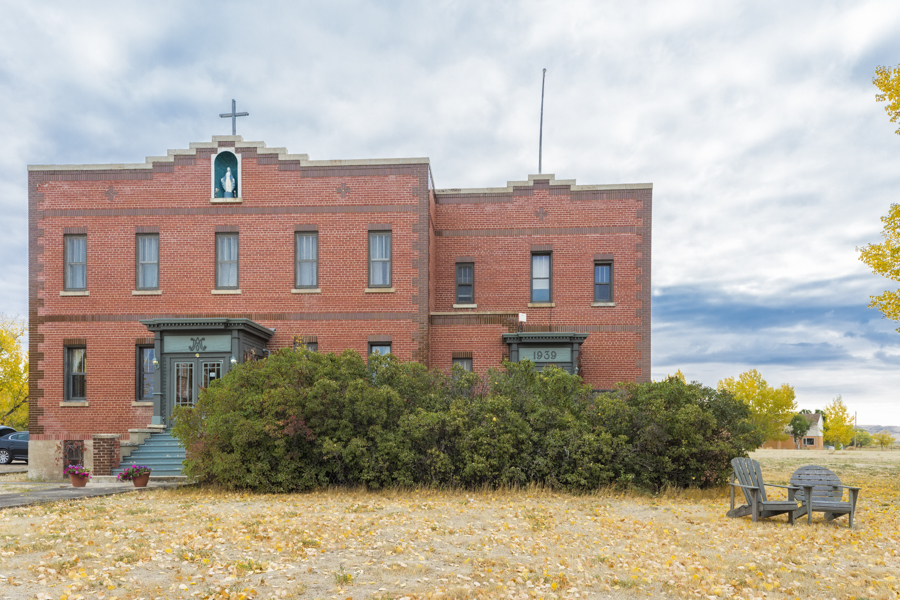
Before moving on to the pictures from the park itself, I wanted to include the next photograph featuring the iconic grain elevator seen in small towns across the west. This photo was taken at sunrise on a partly cloudy and brisk morning. A grain elevator is an agricultural facility designed to stock pile grain. The term grain elevator also describes a tower containing a bucket elevator or a pneumatic conveyor, which scoops up grain from a lower level and deposits it in a silo or other storage facility. In most cases, the term grain elevator also describes the entire elevator complex, including receiving and testing offices, weighbridges, and storage facilities.
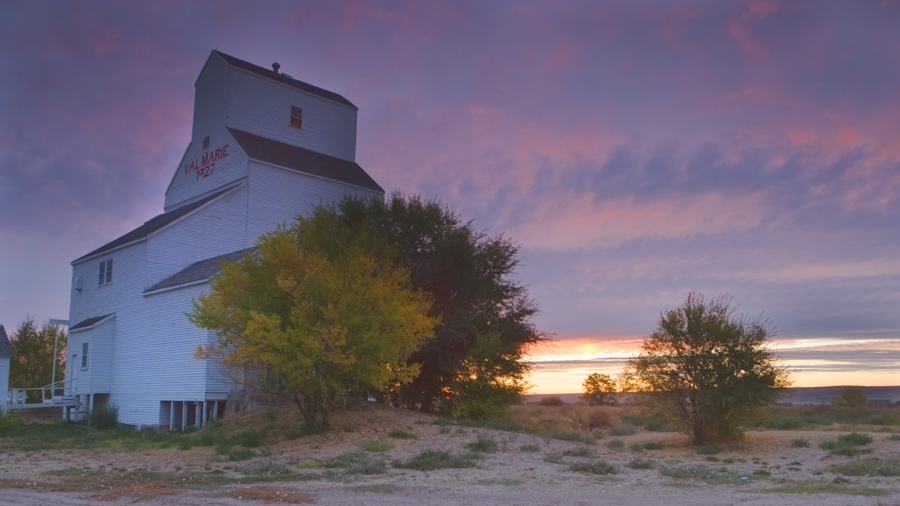
My next photograph was taken en route to the park on the evening of our arrival. Although it has nothing to do with the park and its scenery it was an irresistible subject, located just outside the park’s entry. One can imagine its story and how it got where it is, but one thing is for certain. This vehicle has served a valuable purpose as a target for hunters tuning their shooting skills in preparation for a hunt.
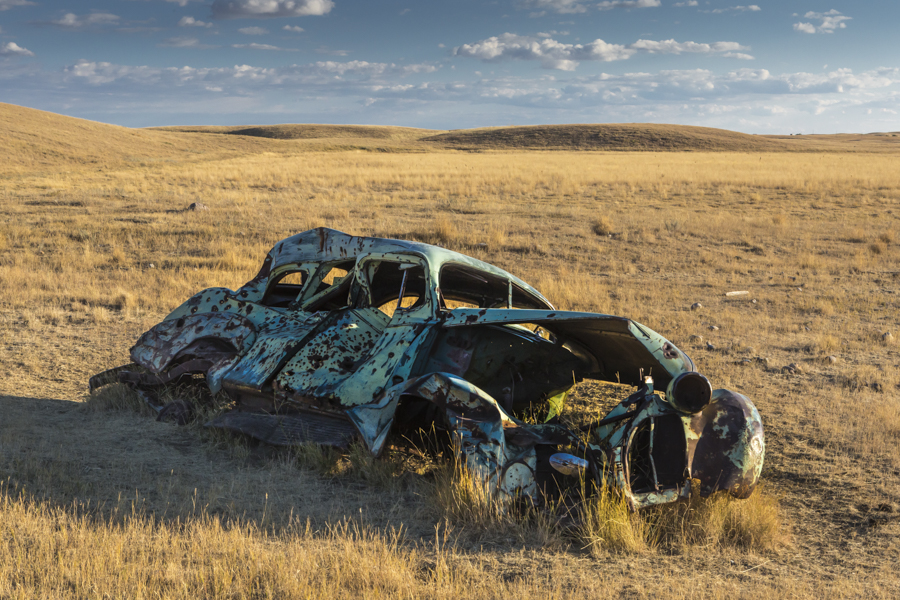
My next picture was also taken on the evening of our arrival. The warm light was splendid and it was a pleasure to get a number of shots of the idyllic, prairie landscape. This shot pictures a typical roadway, leading from the main road to a ranch, located within the park boundaries. It’s painful to consider shovelling this driveway in winter.
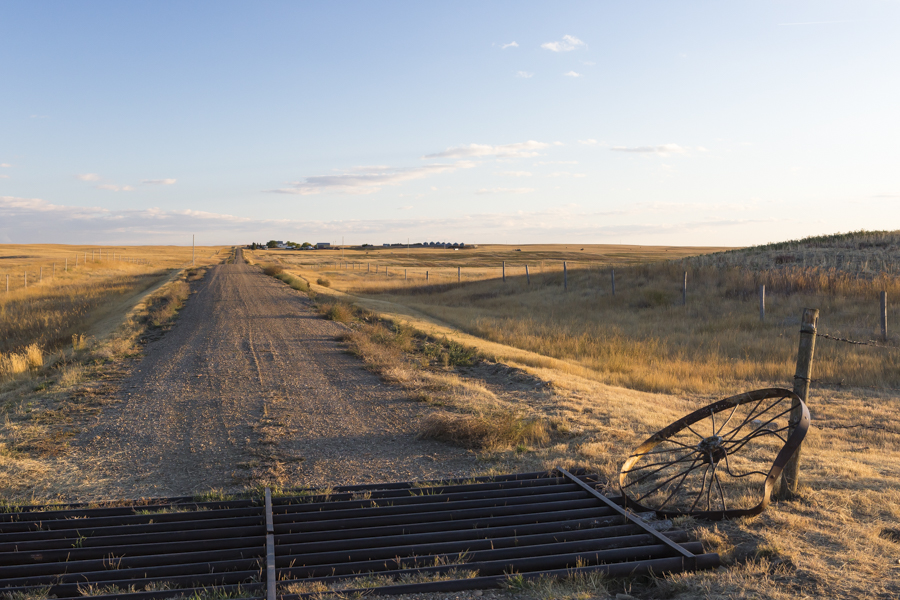
Typical of the prairie landscape is a slough, a channel sporadically filled with water. This scene captures the rolling hills characteristic of the prairies. The image of Saskatchewan being flat is not entirely accurate. Perhaps we’ll need to reconsider the appellation of Saskatchewan residents (flatlanders) and dispense with the jokes: “It is so flat here that you can watch your dog run away for two days.”
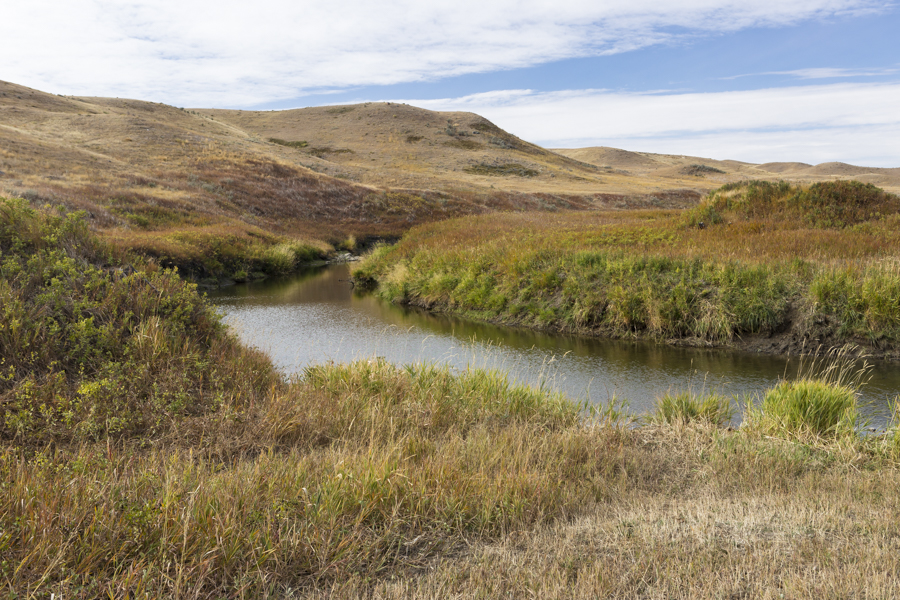
Near the north entrance to the park, I saw an old, abandoned building sitting alone on a prairie hill crest. Another great photo subject I could not resist.
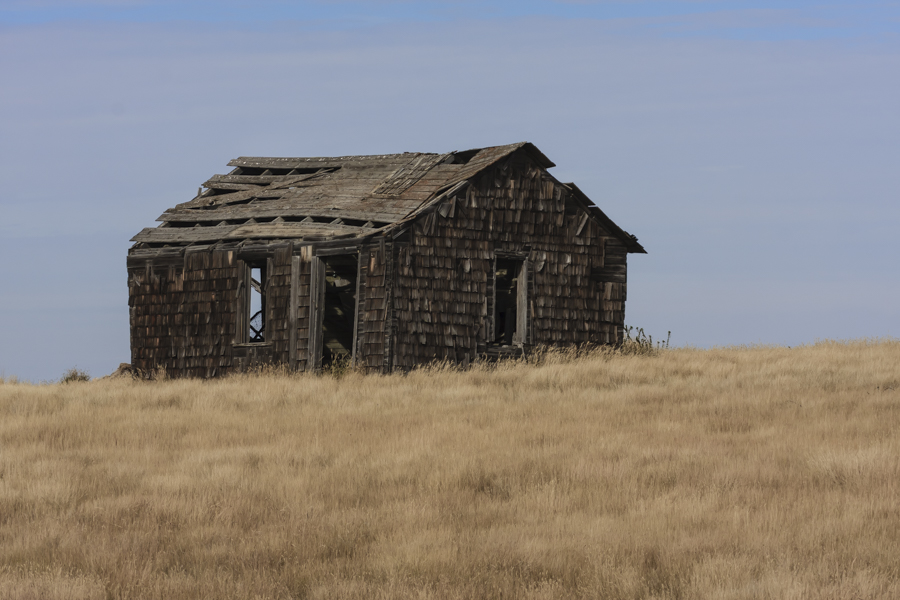
Grasslands National Park is boasts a wide variety of wildlife including the pronghorn antelope, the prairie rattlesnake, greater sage grouses and the country’s only black-tailed prairie dog colonies, to name but a few. We did meet its most prominent resident, the plains bison, a species that was nearly eradicated on the prairies of Canada and the Great Plains of the United States during the 19th century. These large, magnificent animals are prospering in this, their native environment. They seem affable but they are formidable beasts and the heaviest land animals in North America. Bison stand some 5 to 6.5 feet tall at the shoulder, and can tip the scales at over a ton. Despite their massive size, bison are quick on their feet. Best to keep one’s distance.
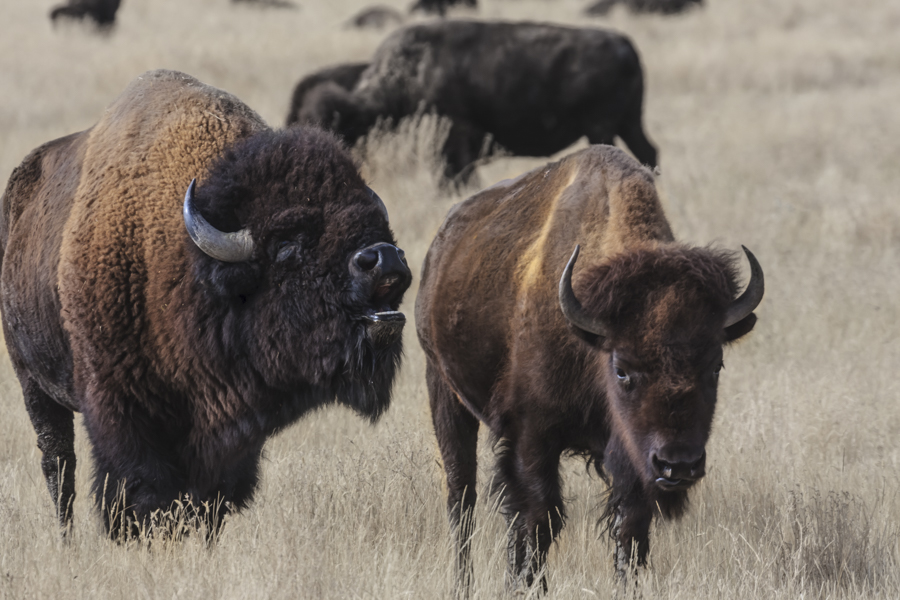
We had hoped to visit the Cypress Hills Interprovincial Park, spanning the Saskatchewan/Alberta Border. Regrettably it was closed, due to extreme, dry conditions and the consequent risk of forest fires. We’ll safe this destination for a future photo expedition.


Peter as usual the photos are so beautiful. We just HAVE to come to Canada again. Hard to say name but I love the name Saskatchewan!!
Hi Barbara,
Great to hear from you. Hope you and Leigh are doing well. The name for the province of Saskatchewan comes from the Saskatchewan River, so named by the indigenous Cree people, who called the river the Kisiskatchewani Sipi, meaning “the swiftly flowing river.” It’s interesting you find it hard to say. I had the same experience in Australia with Aboriginal names. I think it’s about what we grew up with and are accustomed to hearing.